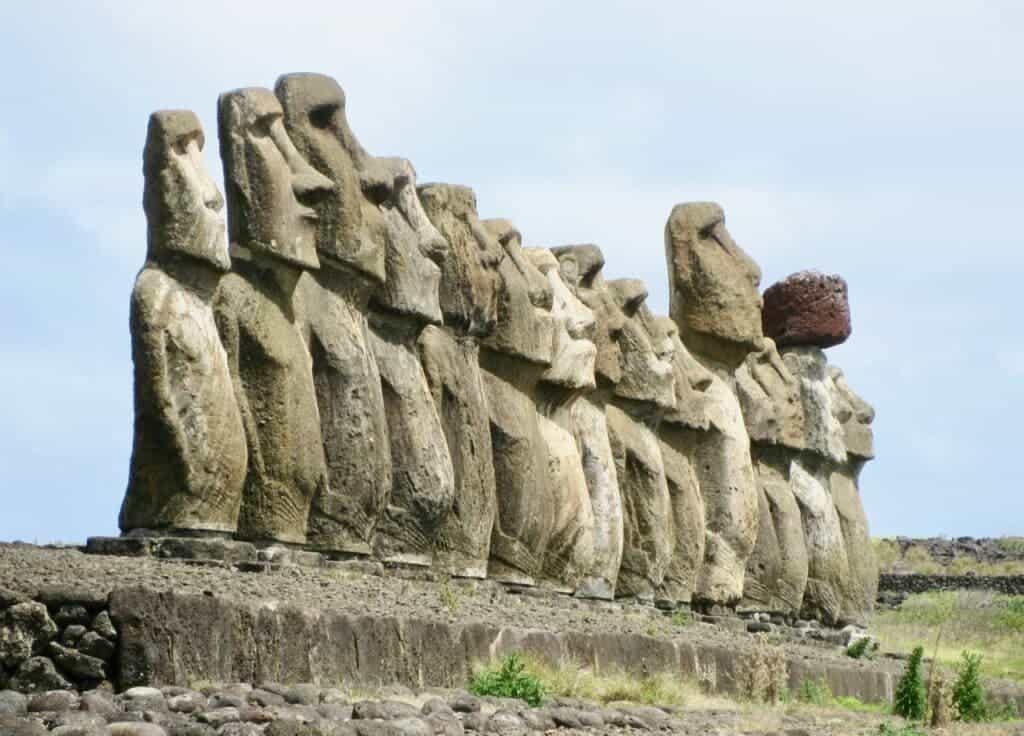Indigenous Americans and Polynesians made epic voyages through the open ocean, encountering each other as early as 1200 A.D. That’s centuries before the arrival of Europeans, according to a new study, which looked at the genomes of modern inhabitants from Polynesia and the Americas.

The possibility of contacts between the two regions has been an area of interest for researchers for decades. Archeologists believed the two regions made early contact, mainly due to the early cultivation of a South American sweet potato in Polynesia. The results of this new genomic study now confirmed they did.
Alexander Ioannidis from Stanford University in California and his international colleagues analyzed genetic data from more than 800 individuals hailing from 15 indigenous American communities and 17 Polynesian islands. The “conclusive evidence” suggests early encounters between the two groups.
The study specifically looked for signs of early Polynesians and Indigenous Americans interbreeding, which would leave a clear genetic signature in their offspring. What they found was that people from Polynesian islands have genetic traces in their DNA linked to indigenous South Americans, especially with the Zenu tribe from Colombia.
Then, the researchers went on to trace the timing of the encounter, looking at the length of the indigenous American genomic segments. They finally estimated that the initial admixture took place in the eastern islands of Polynesia around 1150-1230 A.D. On Eastern Island, the encounter was much later at around 1380 AD, despite being the closest to South America.
“Our analyses suggest strongly that a single contact event occurred in eastern Polynesia, before the settlement of Rapa Nui, between Polynesian individuals and a Native American group most closely related to the indigenous inhabitants of present-day Colombia,” the study said.
Some open questions
While the study confirmed the encounter, it couldn’t clarify how it unfolded. South Americans may have drifted thousands of miles to the Pacific or Polynesians might have traveled to South America and mixed with the locals there. The question is still open for the researchers, who hope to continue looking into this.
The Polynesians are well known for their skills in ocean exploration because of their long voyages across the Pacific Ocean. They have traveled as far as the Hawaiian Island and Easter Island in the east and New Zealand in the south, looking for new settlements on canoes guided by the stars.
But some have argued that indigenous Americans also adventured to Polynesia, taking advantage of favorable weather conditions and currents. Back in 1947, Norwegian explorer Thor Heyerdahl famously sailed on a simple wooden raft from the coast of Peru to Polynesia, in order to prove his theory that people from South America could have colonized Polynesia.
The study adds more evidence to the early contact between indigenous Americans and Polynesians. Previously, researchers discovered hints of their connections in the sweet potato plant, which is from South America but was grown all over Polynesia before Europeans arrived in the Pacific.
In 2013, a study suggested that the sweet potato was first introduced to Polynesia between 1000 and 1100 A.D., most likely by Polynesian voyagers who reached the western coast of South America and brought back the crop, before spreading it to other Pacific islands.
The study was published in the journal Nature.


